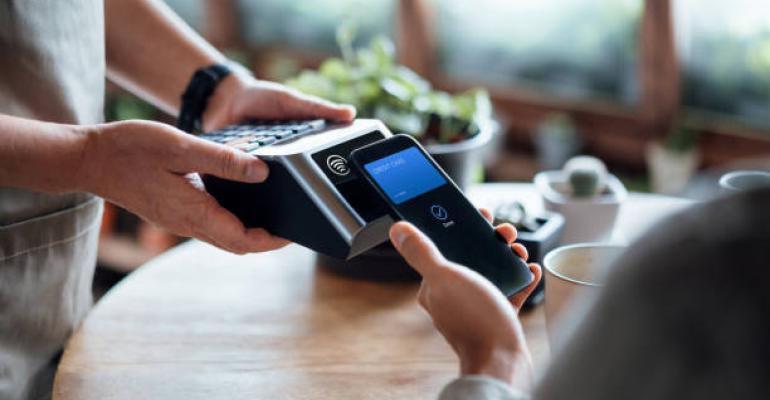The National Restaurant Association released its annual 2024 State of the Industry report, and unsurprisingly, technology is one of the top concerns both for consumers and operators. In fact, according to the report, more than three-quarters of operators believe that technology gives them a competitive edge. But they still believe they have a long way to go, as only 13% of operators said that their restaurant technology is leading-edge. To remedy this gap in technology investment, 60% of operators said they plan to invest in consumer-facing technology in 2024, while just over half plan to invest in kitchen-facing technologies.
“Take any technology experience in a restaurant, the pandemic accelerated adaptation of tech in restaurants,” Hudson Riehle, senior vice president of the research and knowledge group for the National Restaurant Association told Nation’s Restaurant News “The fact is it was going on beforehand but the report shows that across the board for different aspects of restaurant tech, more operators expect to invest more this year than last year.”
Here are other tech-related insights gleaned from the State of the Industry report:
Full-service restaurants should step up their tech game
According to the data, consumers are more likely to say that technology had a positive impact on their experience at full-service restaurants (46%) than at limited-service restaurants (39%).
However, consumers aren’t exactly looking for kiosks and robots at their full-service dining locations: More than one-quarter of respondents are looking for tech that makes ordering easier and faster, while 30% look toward tech to facilitate payment easier (likely to eliminate flagging down a server at the end of a meal).
Despite the fact that consumers admitted that technology would enhance their experience, the majority (64%) of consumers still prefer traditional service experiences rather than high-tech experiences at sit-down restaurants.
Easier ordering experience trumps shorter wait times
For quick-service restaurant experiences, the top item on their restaurant tech wish list is anything that makes ordering easier and faster (like kiosks, digital menu boards, and ordering ahead of time). Ease of use ranked higher even than speed of service, proving that for many customers—technology usability is a priority over getting their food faster.
Tech adaptation falls squarely across generational lines
For every single question posed to consumers about tech needs and adaptation, across the board, younger generations preferred more technology, while older generations preferred more traditional hospitality with less technology.
For example, 73% of Gen Z would prefer to order delivery from a restaurant that offers third-party delivery (with 27% preferring to order directly from the restaurant), while the Baby Boomer generation was exactly the opposite of their younger cohorts, with 73% preferring to order directly from the restaurant and only 27% preferring the third-party delivery app.
More surprisingly, Gen X is more likely to align with their younger Millennial cohorts than with the older Baby Boomer generation. For example, Millennials and Gen X are most likely to want technology that promotes faster and easier ordering. Millennials are also most likely to sign up for a digital loyalty program, with two-thirds responding in the affirmative. The younger Gen Z generation is the most likely group to prefer a high-tech restaurant experience as opposed to traditional hospitality.
The majority prefer to order from delivery apps
Now that off-premises dining has a firm foothold on the American restaurant experience (more than half of all respondents say that takeout is an essential part of their lifestyle), where are customers ordering? While this may have been reversed pre-pandemic, 53% of all adults said they would prefer to use technology like third-party delivery in their food-ordering experience. Additionally, 59% of respondents said they’ve ordered from a third-party app in the past year, while almost three-quarters of Gen Z have done so.
Automation augments instead of replaces staff
Technology does not just cover the consumer experience. Almost half of all operators say that automation will become more common in 2024 and beyond. However, operators should not rush to replace their human employees with AI ones: About 69% of operators said automation would augment, rather than replace staff, and only 14% of operators have used automation to replace employees.
For a more complete breakdown of the report, including data on sales forecasting and the workforce, read on here.
Supplemental reporting contributed by Nation’s Restaurant News executive editor Alicia Kelso.





